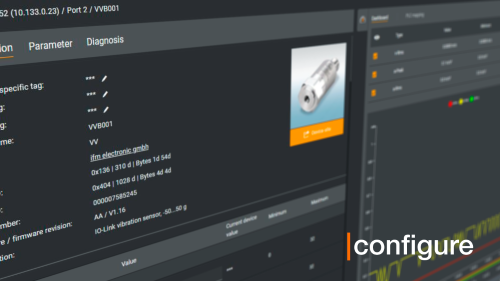moneo IIoT platform
Start small, experience success and then scale up
Protect your systems -
simply, digitally, cost-effectively
Monitor machines, optimise processes and plan maintenance with our moneo IIoT platform. Benefit from direct sensor connection, fast implementation, PLC-independent operation and open protocol integration -
simply plug and work.
Increase your machine availability
Prevent unplanned downtime by predicting failures and increasing machine availability.
Ensure process quality
Improve your process performance by monitoring and detecting deviations in real time.
Optimise your energy consumption
Reduce operating costs by monitoring energy consumption at machine level.
Get started now in 3 simple steps
Get inspired
Kickstart IIoT
*It is possible that the cloud subscription is not yet available in your region. |
Discover how you can optimise your added value independently and easily every day with moneo
Connect people, processes and data.
ifm’s contribution to Industry 4.0
At ifm, we believe that your path to smart manufacturing should be easy to implement, without the need for expensive consulting and long test phases. We are therefore committed to the following principles:
Industry 4.0 projects should offer clear and measurable benefits for manufacturing.
The technology should be “plug and work” and involve minimal effort so that customers can quickly reap the benefits.
Hardware and software should be easy to implement without requiring specialist expertise and integration consulting.
The system architecture should be “open” for communication with the most important hardware and software platforms.
No-code software solutions are ideal for shortening the time to market of Industry 4.0 projects
Proof-of-value projects can enhance project definition and add value that results in a faster return on investment.
Good to know
Cooperation
ifm is a driver of innovation through involvement in top consortia and alliances
Cyber security
Cyber security is critical to the secure digitalisation of industries.
ABC – IIoT
Discover the exciting world of the Industrial Internet of Things (IIoT).
Trade fairs
ifm is present at trade fairs worldwide. Join us there. We look forward to your visit.
Success stories and use cases
Find out how ifm has helped customers improve their production plants in real time.





